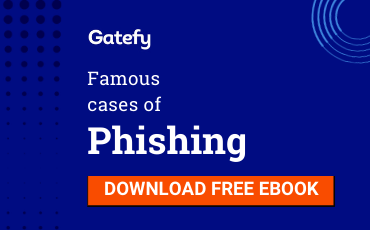What is email security?

Email security is a broad term used to define techniques, tools, and solutions used to protect email accounts and domains against cyber attacks, intrusions, unauthorized access, and data loss.
Email security is just one of many areas of information security, and we can say that it’s one of the most important.
So much concern is due to the fact that email is still the biggest gateway for attacks and intrusions on the internet. It’s used daily as a vector for different types of scams, such as phishing, spam and BEC (Business Email Compromise), and for the spread of malicious code, such as ransomware and trojan.
In this article, we’ll talk more about email protection, vulnerabilities, types of threats, and also how to prevent email threats. Check it out!
Table of Contents

How secure is email?
Email is an efficient and indispensable system, but it’s also an unsafe environment. In other words, email isn’t secure. There are many security vulnerabilities that can be exploited in an email by malicious people.
Often, we report here on the Gatefy blog cases of scams involving the most varied types of email attacks, from simpler scams to more sophisticated and advanced attacks.
Take a look:
This isn’t by chance, as several reports, companies, and agencies from around the world warn about the risks of email.
According to the FBI’s 2020 Internet Crime Report, cyber attacks caused losses of USD 4.2 billion in the year. The vast majority of this damage is related to scams that have email as the main vector.
Only BEC scam, which is an advanced email threat, caused losses of USD 1.8 billion. Phishing scams add up to another USD 54 million in losses. These are just numbers to illustrate.
In addition, email is involved in other types of scams, such as investment fraud, romance fraud, and identity theft.
To cite another example of the risks of email, it’s estimated that more than 80% of the worldwide email traffic is spam. That is, 8 out of 10 emails are unsolicited and even malicious messages, depending on the case.
In short, email is a platform that has many vulnerabilities and, unfortunately, there are people who know and take advantage of it.
What are the most common email threats?
Now that you know that email is insecure, let’s talk a little bit about the main types of email threats. We made a list. Check it out.
1. Spam
Spam is an unwanted message that harms company productivity, affects servers, and can also be used to spread malware.
2. Phishing
Phishing is a type of malicious email that uses persuasion and false information to trick the victim. The aim is to convince the victim to provide access to systems or to disclose sensitive information.
3. Malware, such as ransomware and virus
Malware is a broad term used to refer to malicious software, such as ransomware, virus, worm, trojan, and spyware. The email has always been widely used for the spread of different types of malware, which are hidden in malicious attachments or links.
4. Social engineering
Social engineering is a method of research and persuasion widely used in spam and phishing attacks. Basically, the hacker studies the victim to deceive him.
5. Business Email Compromise (BEC)
BEC, also known as CEO Fraud, is an advanced threat that occurs when a cybercriminal impersonates a company employee or CEO to mislead and commit crimes.
To find out more details about each of these threats, click here and check out a full article about them.
How are emails exploited?
At a first glance, email looks like a simple communication system, because it’s simple to understand and easy to use for those who have a little familiarity with the internet.
Just open the platform, write a text and click “send”. Right after it someone already received the message in his mailbox.
But the fact is that there are different processes and protocols that make up the creation, sending, and receiving of an email. If you want to know more about this subject specifically, you can click here.
For now, let’s stick to the top 5 components or parts of an email that are often spoofed by cybercriminals. These parts help us to understand how emails are exploited:
- The sender’s email address.
- The sender’s name.
- The body of the email.
- Attachments.
- Links.
How to secure your business email
Email security should not be thought of as a single, closed task. What we mean is that email protection needs to involve different fronts of action and initiative within a company.
To summarize, in practice, it’s important to adopt email security solutions, create consistent email policies and invest in cybersecurity awareness.
1. Email security policies
In a nutshell, email security policies can be understood as actions and standards that the company determines and need to be respected.
First, think of email policy as an instruction manual. A set of standards that company employees must respect.
Second, think of email policy from a technology and IT perspective. In this sense, the company must adopt technologies and procedures that guarantee the safe and reliable use of email.
Check out some examples of best email security practices:
- Adopt a Secure Email Gateway solution.
- Deploy DMARC.
- Use multi-factor authentication.
- Invest in cryptography.
In this article here, you have more tips and information on email policy.
2. Email security solutions
Effective email security involves adopting email protection solutions. As already mentioned, email has numerous vulnerabilities that can only be mitigated with the use of tools.
A Secure Email Gateway (SEG), for example, is an email security solution that protects corporate email from different types of threats, such as spam, phishing, ransomware, and BEC.
A SEG, like Gatefy Email Security, provides the visibility and control the company needs to continue operating with confidence.
DMARC is another technology that can (and should) be adopted to improve email security. As it’s difficult to deploy it, it’s recommended to adopt a solution that facilitates the DMARC email application and authentication process, as is the case with Gatefy Anti-Fraud Protection.
You can read more about this topic in the following articles:
3. Employee education
In order to ensure more efficient protection, in addition to adopting email security solutions and policies, companies should invest in education and awareness.
Some instructions that should be given to employees are, for example:
- Report suspicious emails.
- Don’t interact with spam.
- Don’t click on suspicious links.
- Don’t click on suspicious attachments.
- Don’t share sensitive information.
- Adopt strong passwords.
- Learn to verify the name and address of the sender.
Conclusion
As we’ve shown, email security is complex, involves different methods and technologies, and requires a combined effort by the company and its employees.
That’s why, knowing how susceptible employees are to attacks and scams on the internet, technology should be used for the sake of security, minimizing the risks of data breaches and unauthorized access.
Always keep in mind that one malicious email can be enough to stop all of a company’s operations. In some cases, the losses are incalculable.
If you want to learn more about email security, including technologies and solutions, write to us. We have a team of experts on the subject. If you prefer, request a demo of Gatefy here.

